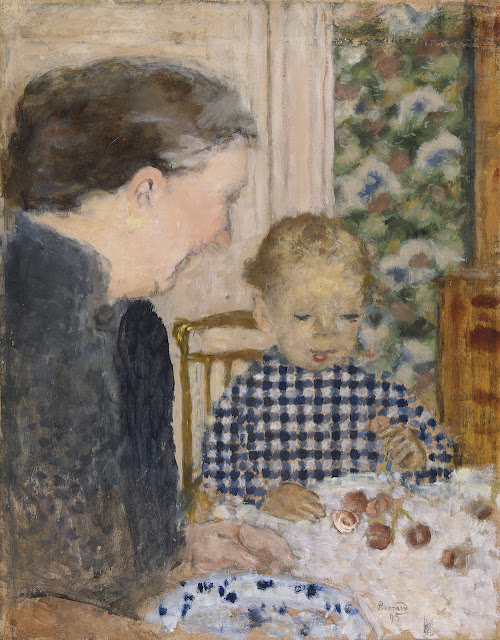It's been said that when you are drawn to the work of a particular artist, and want to learn more about their approach, you should not study the work of THAT artist, but rather the work of the painters who influenced them. In other words, look at their artistic grandfathers, and great-grandfathers. Taking this advice to heart, I have enjoyed tracing the family tree of living artists whose work I admire. Many lines lead back to Patrick George, and George's mentor, William Coldstream. For today, I'm looking at Patrick George (1923-2016).
My research on George led me to a wonderful little book of his writings. It's entitled The Likeness is in the Looking. George taught at the Slade School of Fine Art in London for forty years, and the book includes some of his lectures and teaching notes. It also includes entries from his diaries. What a rich way to get into the thoughts of a wonderful painter!
If you've never heard of Patrick George, it's partly because he was a modest man, who focused more on his paintings than on self-promotion. He lived in the English countryside in Suffolk, and loved to paint the local landscape. His obituary in The Guardian in 2016 called him one of the art world's best kept secrets. It noted that "he was celebrated for his devotion to the particularity of things, especially trees, and English light and atmosphere". But he also painted wonderful portraits, as you can see above.
I love this quote from one of George's letters: "Could there be a better way of passing the time than sitting in a field surrounded by the intense concentration of nature...? We paint because it is all marvelous to look at, that's why." George liked to look, and he painted what he saw. He was keenly aware that his position vis a vis the motif was key, and that no place else would do, or ever be the same. The shapes and patterns he saw, and their translation into paint, are simply breathtaking. At least to me they are.
"Valley Landscape", Oil on Canvas, Patrick George, 1965George's teaching notes refer to the desirability of "unpredictable shapes". In fact, those unpredictable shapes are part of "accuracy". As is "a definite particularity". He emphasizes "Seeing shapes as shapes, rather than linear boundaries". There are so many nuggets that I want to write down and tape to my studio walls as mantras.
This post is illustrated with George's paintings. I will let the paintings speak for themselves, because it can be very hard to write about paintings. As George himself observed, "Lectures are made from words, and paintings are not made from words." Enjoy looking.
PS for the curious: Mr George says that two of his "painting ancestors" were Durer and Rubens. Ideas for delving back further into art history!

















